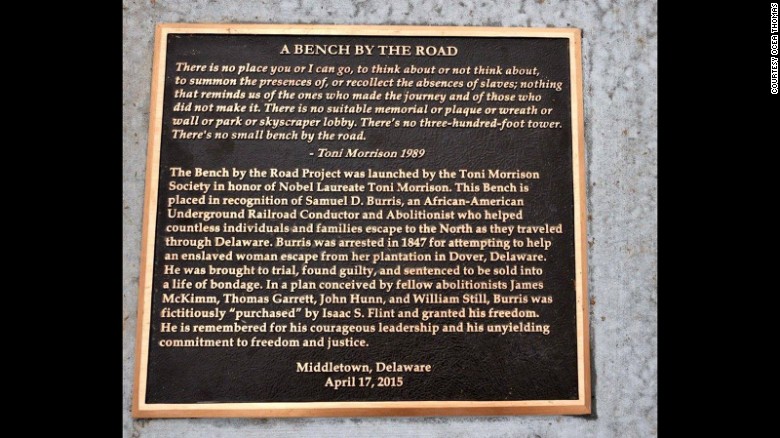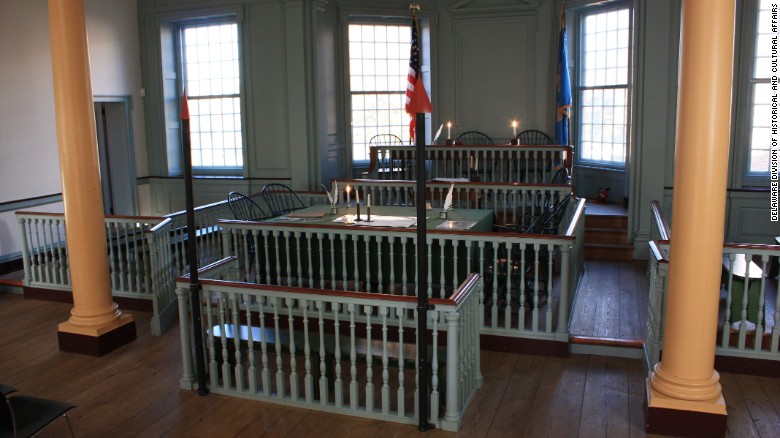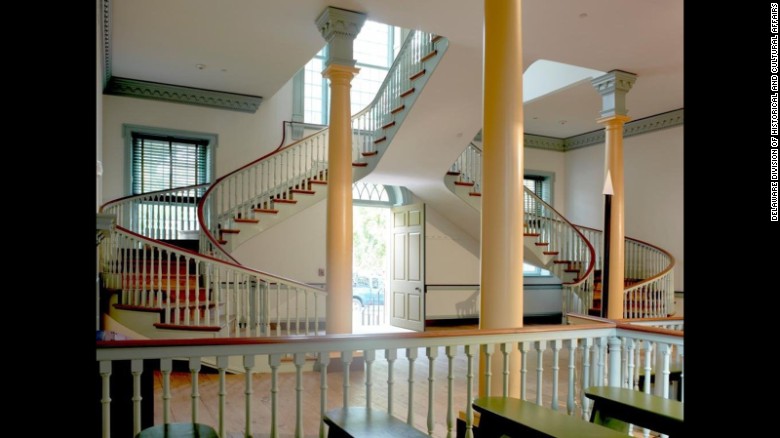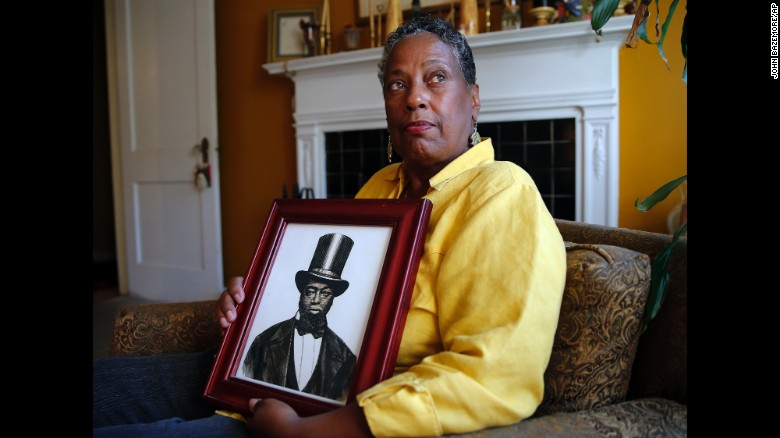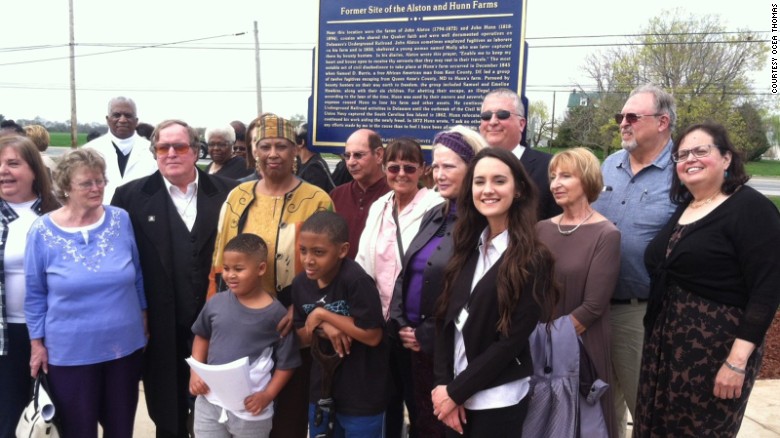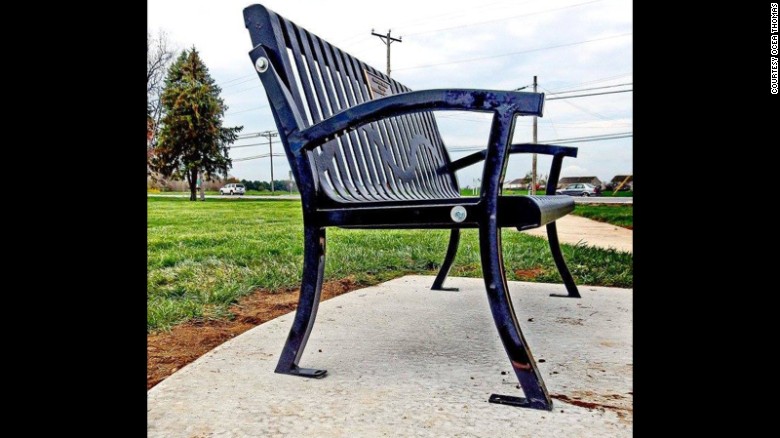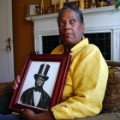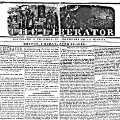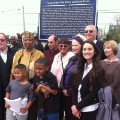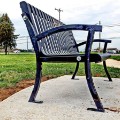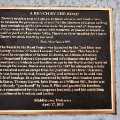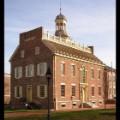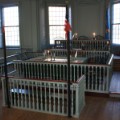Samuel D. Burris, a free black man, railed against those who enacted laws that allowed slave traffickers to freely conduct business in Delaware.
Burris' courage is particularly notable because, unlike the white abolitionists with whom he worked, the father of five children and husband to Catherine could be sold into slavery for his actions. He eventually was ordered to be sold into servitude, or slavery, for two periods of seven years each.
"The man put his life on the line and the life of his family on the line to do work that was illegal at the time," said Robin Krawitz, a
Delaware State University historian writing a book about Burris. "We can look back and say that our system was wrong. He was not wrong, he was practicing civil disobedience."
The story doesn't end with Burris' conviction.
A white abolitionist posing as a slaveholder purchased the inmate for $500 and eventually spirited him away to safety and to his family in Philadelphia. Burris, undeterred even after having spent 14 months in jail, for a time returned to Delaware and continued to participate in the Underground Railroad.
Markell said issuing a pardon to Burris is the right thing to do. "He was courageous even when putting himself in danger."
The pardon is the result of a grass-roots effort that quickly gained traction this year. Among those who lobbied for it are Ocea Thomas, an Atlanta descendant of Burris, and Robert Seeley, who said his ancestor, a white Quaker, helped 2,700 people, including Harriet Tubman, to freedom.
Thomas says when she recently received a call from the governor's office about Markell's decision, she was "overwhelmed with pride" and happy for Seeley, Krawitz and Bev Laing, a state historian who did extensive research on Burris.
Krawitz and Laing, who have researched Burris' life for nearly 20 years, speak glowingly of their subject's selfless actions, faith and moral character. The pardon is bringing more attention to an individual and a chapter in American history many know little about.
"What would possess someone to do this?" asked Laing. "Whether the Holocaust, or current history, what caused someone to reach out and put their entire life and family on the line for a stranger? That's called a hero."
'A microcosm of the nation'
People often are surprised to learn that Delaware
was a slave state before the Civil War. The 1840 census showed 16,916 free African-Americans and about 2,600 slaves in the small state's three counties.
Burris was born in 1813 in the Willow Grove area of Kent County to parents who also were free. The family owned property and Burris worked as a farmer, laborer and teacher during his lifetime.
"Delaware was a microcosm of the nation -- an industrial north and an agrarian south," Laing said.
While relatively small in number, Delaware slaveholders held outsized power. Their foes were
Quakersand Methodists who strongly opposed slavery and worked with abolitionists, including a group in Philadelphia, against the "peculiar institution," a 19th-century Southern euphemism for slavery.
Burris and other free blacks were encouraged to "toe the line" and live with racial prejudice that extended to not allowing them to vote.
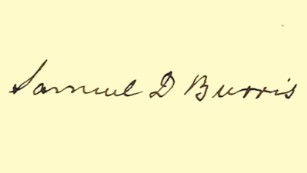
Bev Laing, a historian for the Delaware government, said of Burris: "The first time I saw his signature it was very powerful."
It was against that backdrop that saw Burris became a conductor for the
Underground Railroad during the mid-1840s, helping guide slaves on their journey north and transporting them to stations where they could rest. He aided the Hawkins family during their successful 1845 escape to Pennsylvania. While others were arrested, Burris was not charged.
The case against Burris began months after he helped a slave named Maria Mathews (perhaps Matthews). She was taken into custody in January 1847 before they could get on a steamboat in Delaware. Sadly, Mathews was returned to slavery.
Burris, who remained free, faced a grand jury inquiry. He was taken to the jail in the capital of Dover, but he was unable to make bail because authorities raised it after supporters came up with the initial amount.
A jury later that year convicted Burris for aiding Isaac and Alexander, known only by their first names, and an unnamed young woman. He was acquitted in the Mathews case.
Burris received two seven-year servitude sentences. In 1848, he was led to the marble steps of the Old State House to be sold into slavery. The building today houses a museum.
"Delaware was a slave state, the jury was all pro-slavery and Samuel Burris was put on the auction block. He was examined like you do with animals. He was stripped down, his teeth were examined," Seeley said.
Seeley's ancestor is
Thomas Garrett, a Quaker abolitionist and Underground Railroad "
stationmaster" who provided shelter or a hiding place.
Wins his freedom through a ruse
The sale of Burris was anything but routine.
"There weren't other men who put themselves out to do what he did," said Laing.
The auction, which may have taken place in September 1848, took a dramatic turn: The Philadelphia Anti-Slavery Society came up with a novel idea.
Isaac Flint, a Quaker friend of Garrett, was enlisted to go from Philadelphia to Dover, where no one ostensibly knew him. He carried $500 in his pocket.
Burris did not know of the rescue plan. "He truly believed he was being sent South. Even though (the sentence) said 14 years, it was common knowledge he wasn't coming back," said Laing. Burris' family would have been left destitute had he been enslaved.
It has been recorded that Flint, upon prevailing, whispered into Burris' ear "not to fear, you have been purchased with abolitionist gold." Burris had to serve a few more months in jail before he made it to Philadelphia and rejoined his family.
Even after this close call, Burris returned to his native Delaware to continue helping slaves to freedom.
"A year after he was prosecuted and punished there was a petition to the state Legislature to come up with a punishment that was more severe because the notorious Samuel Burris was still doing the work in the neighborhood," Krawitz said.
With the threat of 60 public lashes looming over his head, Burris gave up his efforts in Delaware, but he did not give up fighting against slavery. It's not known exactly how many slaves he helped, but it likely is higher than indicated in court and historical records.
Burris moved to San Francisco, where he raised about $136 through his church to send to Philadelphia, where it could be used to assist recently freed slaves.
He died at age 50 in December 1863, before the end of the Civil War but after President Abraham Lincoln had issued his landmark
Emancipation Proclamation, which declared slaves in the South forever free.
Burris never took his freedom for granted, writing in The Liberator that "the lowest condition in life, with freedom attending it, is better than the most exalted station under the restricts of slavery."
Confronting history, discussing slavery's legacy
Gov. Markell, who acted on a recommendation from the state Board of Pardons, said edicts such as the one he will issue Monday are rare.
"This is really an extraordinary case. We don't normally grant pardons posthumously," he said. "This was an opportunity to right a wrong for a person with steadfast courage who put themselves at risk. It seemed like a good thing to do."
A new sign about Burris' efforts will be unveiled just outside his hometown of Willow Grove.
Kate Clifford Larson,
author of "Bound for the Promised Land: Harriet Tubman: Portrait of an American Hero," a biography of the most famous conductor on the Underground Railroad, said the byway and Monday's action are important -- not only for honoring Burris, but also for bringing an entry point for people to talk about slavery and its ramifications.
"We still need to educate not just our young people but all people ... maybe we won't have these contentious battles over Confederate flags and Confederate monuments. If people knew the truth, how people risked their lives. ..."
Larson points out that some African-Americans who helped others to freedom were not as fortunate as Burris. "Many were sold and sent to the Deep South."
The
Harriet Tubman Underground Railroad Byway, a self-guided auto tour, links slave "safe houses" and marks routes in Maryland and Delaware traveled by freedom seekers.
Markell, who acknowledged he had not heard of Burris before this year, said Delaware has "come a long way" since the days of slavery and the story of Burris is a learning opportunity.
"You do have to confront your history. You don't sweep it under the rug," the governor said. "There are some things to celebrate, some (others) to look at."
"I think this makes it very real," he said. "We study and learn about the Underground Railroad and here we are in 2015. This is when history really comes alive, which makes it more interesting for children."
Thomas, who submitted two letters seeking a pardon for Burris on behalf of her family, is celebrating the legacy of her "Uncle Sam D," as she calls Burris.
"The national and international interest is amazing. I am pleased that his name, his story and the positive closure has been brought to the attention of so many."
CNN's Janette Gagnon contributed to this report.




